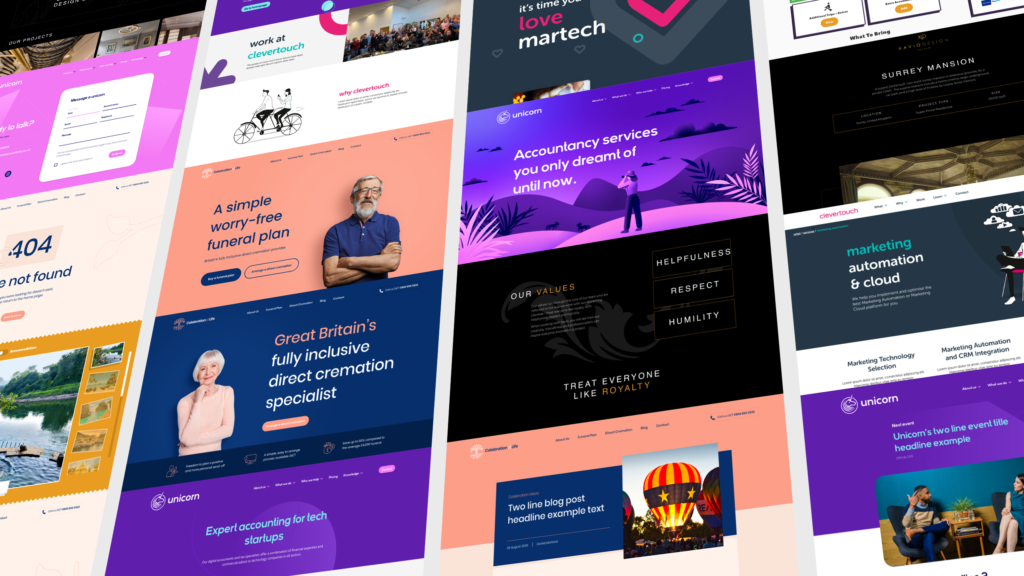By Simon Bonello, Managing Director of Bigger Picture Agency
A website is the face of a business. It is where people will immediately make judgements based on several aspects, whether that be the speed, opening value proposition, or general design. It is also where a business can engage their audience and turn prospects into repeating customers. Design goes beyond aesthetics; it is how people use the end-product just as much as the interface. The website is where visitors will sense, feel, and live the brand.
The beauty of design when in the hands of talented creatives, is that we can give any brand the perception desired. We can make the smallest start-up look like a seasoned blue chip and we can revamp a business in a boring sector into an iconic brand.
In the current age of standard websites, there are generic layout options which paste in their product or service offering, and then go-live without much thought. But these “off-the-shelf” themes are often forgettable and require heaps of customisation work for even the smallest glimpse of originality (which just ends up slowing the site speed down). The chances are you have seen the very same layout used on completely different websites. If you just got rid of the logo you could be looking at literally any brand, in any sector.
The problem is, many platforms use the same mechanisms, including banners, call to action strips, and the layouts that you commonly see. Some agencies even use a house style, where you will find all their clients have the exact same layout, but with different fonts and colours.
Win the digital first impression
The McDonaldization of web design robs businesses from creating that critical first impression and brand perception that is so crucial to converting prospects. According to data collated by google, on average, 70% of the buying decision is made online before someone contacts a business for the first time. If you are not defining a user journey optimised for conversion you are not convincing somebody to start a relationship with you. Therefore, design is what wins the business their digital first impression.
Businesses looking to break the mould need to reflect their story in a unique way to avoid being forgotten. Decision makers that use standard themes do not appreciate the importance of design and the damage it is doing to their brand. Those that make the effort to be memorable will gain the advantage and stay competitive. Not just in brand recognition but also conversions leading to paying customers. The relationship between design and financial performance is clear through the likes of Google Analytics.
It’s a two-way street, what your design agency needs to do
A good design team will make a unique site, but a great team will make a unique site as well as be accountable for the work they produce. By deploying UX strategists and marketing specialists to work in tandem with the design team, the industry, sector, product/service offering; the DNA of the company can be analysed in detail to support the creation of an exceptional website. The point is, consulting with just a team of creatives will not be enough. A strong combination of design, UX, and marketing is the key to success.
In the discovery phase, the agency will need to talk to the wider team of key stakeholders to build a picture of the business, understand their story so that they portray it in an engaging way for the client’s audience. This should involve multiple sessions with key stakeholders, allowing the team to figure out what needs to be done when it comes to converting prospects online.
One of the most important factors which is often overlooked, is empathy. Answer the questions that your prospects are most likely to have. Why are they coming to the website? What problem do they want solved? Are they ready to part with their information? Design partners will need to empathise with your audience, put themselves in the shoes of the end user and think about the thought process.
Too many cooks spoil the broth
Design by committee is a designer’s nightmare. When you have a group of C-level executives, board of directors or management that are responsible for design sign-off, it will always make the end result worse. This is due to several reasons, ranging from a lack of web design understanding internally, conflicting ideas as well as stakeholders aiming to please seniors rather than putting the customers first which is the most important factor.
My advice would be for companies to appoint the most well-suited individual for the role to be responsible for sign-off. Too many cooks spoil the broth. The scenario to avoid is when an organisation has differing opinions from their CEO, CFO and CMO. Take the pressure off the appointed representative to enable them to align company values with the expertise of the agency.
Design partners must empathise
McDonaldized services and agencies which use a house style are not being empathetic. Bigger Picture’s code of empathy when working with its partners has enabled organisations to connote their story through web design in a distinct way. Every business is unique, and everyone has their own story. Coordinate your team and leverage your design partner to create an exceptional digital experience. Redefine the visitor experience, win the digital first impression and be memorable for the right reasons.








